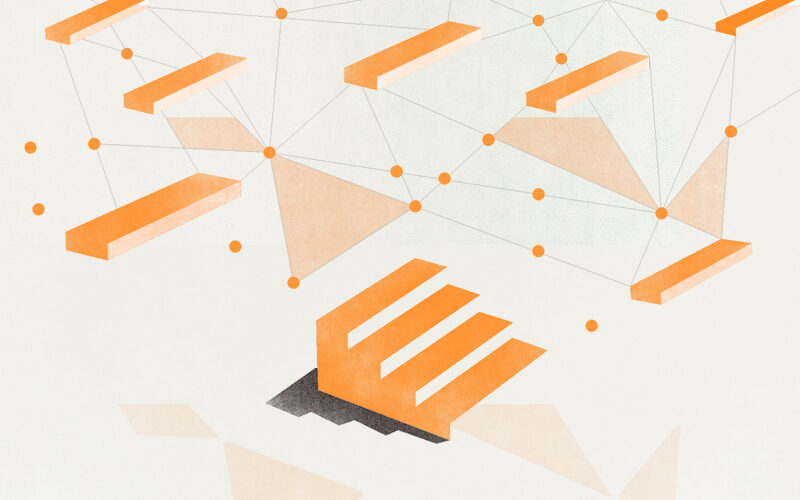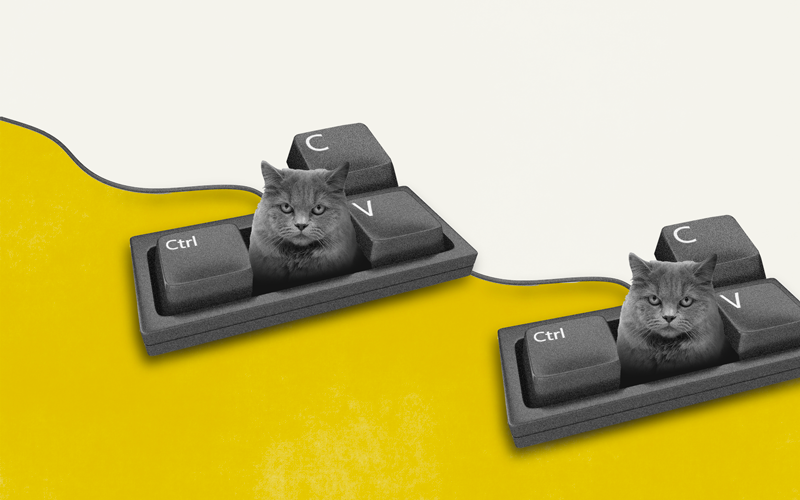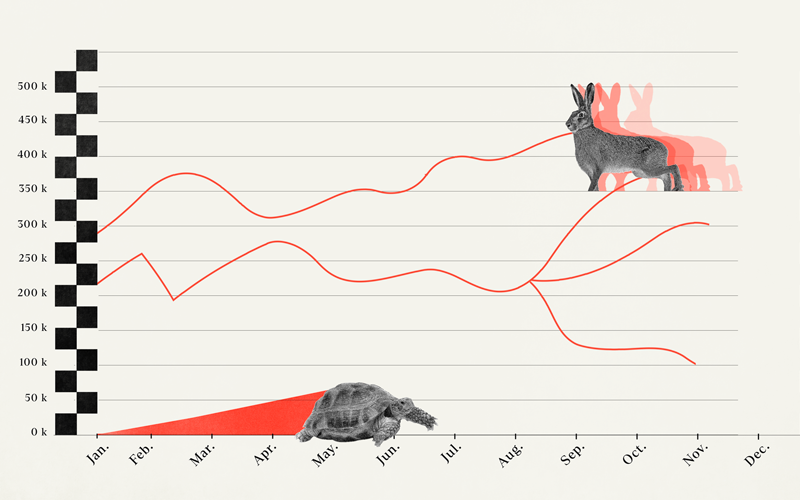“Time in the market, not timing the market” – so goes the monotonous old maxim for stock market investors.
Flip it around, and you’ve got some good advice for startup founders.
Timing is everything when launching a startup. Tech products exist in a delicate ecosystem of possibility. Every type of product release imaginable rests not only on the forerunning technology that enables it, but on the current cultural acceptance of the idea (in other words, how ready people are to embrace it).
Multiple startup founder and incubator Bill Gross puts it best when he says “execution means a lot, but timing might matter even more”. In a study across 200 successful and unsuccessful startups, Gross found that timing accounted for 42% of the difference between success and failure.
The very fact that 35 startups have succeeded and 40 have failed via Gross’s tech incubator Idealab shows that even with the exact same management and funding access, there’s something much less tangible at play.
In some cases it’s blind luck. But in many others, it’s timing.
How mobile phones led to smart babygrows
Wearable technology is a great example of not just how timing dictates success, but how many different strands have to interweave to make the perfect moment for launch.
Microcontroller technology detects things on our bodies like movement, vitals, and heart rate. It then transmits that data from the body to a device. The arrival of this technology was the precursor to wearables.
It’s been around since 1960, but wearable tech as we know it is reliant on mobile networks. Before Fitbits and Apple Watches could benefit from the tech, mobile networks had to be invented and established. Mass manufacture required the decreasing price of sensors, the rise of app culture, and the development of Machine Type Communications (from one computer to another).
Future wearables developers will ride the 5G rollout, which is predicted to reduce the time between detection of a bodily movement and reporting of data from 20 milliseconds to about 1 millisecond, making devices even more responsive (key in high-level athletic/Olympic performance tracking). 5G also requires less component bulk, meaning wearables can get smaller, lighter, and more… wearable.
Arguably, the movement has also relied on institutional wearables like the Apple Watch getting the public comfortable with devices reading their bodies and tracking their every move.
It’s thanks to not one but all of these market conditions that startups like Goldilocks Suit – a singlet that monitors biometrics in newborn babies – have been able to flourish. Parents wouldn’t be able to track their baby’s well being without the smartphones and apps the technology reports on. They wouldn’t want to do it if they weren’t already comfortable and familiar with the concept. And they wouldn’t trust it if the high-speed mobile networks the technology relies on couldn’t keep them instantaneously updated on their baby’s health.
The perfect storm
Figuring out the right time to launch a product is complex stuff. It’s retrospective as well as predictive. It’s landing at just the right spot between moving markets and growing competition. So how the hell do you do it?
You won’t be able to predict the month a certain market, trend, or technology ignites, but you should be able to predict within a year or two. If you think something’s ready to take off, this is a good time frame to launch within.
Marketing models can feel dull and dry within the context of your youthful and innovative startup. But they have their place, and in this case, a serious PESTEL (political, economic, social, technological, legal, and environmental factors) analysis won’t go amiss.
Entire industries can shift around macro or micro events in the economy. The GFC of 2008 and the pandemic of… well, now, both heralded major shifts in consumer behaviour. We have them to thank for the sharing economy, the gig economy, and the work from home revolution.
PESTEL-ing will force you out of your bubble and into the wider world. Think legislative changes, the state and safety of the economy, looming and potentially huge technological shifts, and the physical environmental shifts that may force us to adapt.
When critical mass and scale collide
No one likes being first to the party.
Critical mass is especially crucial if you’re operating in a two-sided marketplace where a balance must be achieved on both sides (the buyers must match the sellers using your platform).
Focusing your efforts on small microcosms is the way to get around this – in other words, starting with a single consumer group or geographical area. As you scale, your growth moves from a linear process to an exponential one.
You can also weaponise exclusivity. Facebook is the most obvious example, famously using the prestige of the Haravard.edu email address and invite-only system to build an excited and engaged user base.
Planning for obsoletion
It’s one thing to pinpoint the perfect moment in technological progress to launch a product. It’s another to try and figure out when further advances will render your product obsolete.
The day will come, it’s just a question of runway. How long do you have before you’ll need to abandon ship (like Blu-ray) or adapt (like Blockbuster could’ve done)?
Who timed it right
The obvious winners of the past two years are the facilitators of the remote work revolution – Zoom, Slack, Microsoft Teams. In the words of the late CEO of GE Jack Welch, “Leaders emerge during trying times”.
QR codes were also brought back from the brink by the pandemic. Touch-free technology was desperately needed and QRs enabled track and trace systems across the globe. They allowed diners to view menus and shoppers to check out without touching anything but their own phones.
…and who didn’t
Kopely was a mobile stress relief app that might have thrived in the aftermath of COVID. Founder Andrew Laux identified ample demand among Headspace and Calm.com crowds. It was March 2020, office life was still going at full tilt. People were stressed.
After receiving impossible app-building quotes in the hundred of thousands, amazingly, Laux found a developer group owner willing to build the app in exchange for equity. Laux launched all his efforts into marketing. Just as he started to see traction and steady organic growth, COVID hit. The pandemic forced the dev group head to furlough employees and face uncertainties in the group’s own finances, and they pulled the plug.
To have the project cancelled after such charmed beginnings was hard to accept for Laux, who said “Although at the moment I completely understood his decision, I just couldn’t believe that all of the work we did ended with this result and there was nothing we could do about it”.
Nick Raushenbush attempted to launch the live-streaming fitness platform Tandem in 2016. Like Twitch, but for fit-fluencers. The main problem was that watching a personal trainer just wasn’t that entertaining. But this was before everyone got locked down at home and got super into home workouts.
Another major stumbling block was that video streaming was pretty rubbish quality 5 years ago. Consumer interest and streaming quality were just not there yet. Had they launched the exact same product in the Spring of 2020… who knows.
…and who we’re yet to see
Zuck is currently making a huge timing play with the launch of the Metaverse. Virtual Reality technology is advancing, but with graphics evocative of early Wii avatars, it’s not quite there.
There’s also the issue of consumer sentiment. 30 year-olds today have witnessed data breach after internet scam after privacy invasion. “Dystopian nightmare” is a frequent term in lexicon surrounding our collective futures.
In the meantime, governments and citizens alike are accusing Facebook of fuelling misinformation and hate. Increasingly, social media in general and Facebook in particular are seen as the enemy. We’re also feeling stifled by our screens (and by the lockdowns that made us miss the outdoors) and uneasy about moving yet more of our lives online.
Even as the technology ripens, shifting consumer sentiments might mean a Metaverse-based future will have arrived culturally too late. Only time will tell.










